Ireland is enriched with wonderful and timeless Monastic Sites that have stood the test of time. Discover the beauty of these sites for yourself!
Cong Abbey, Mayo 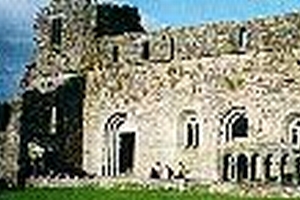
Situated on the site of an earlier monastery founded in the 7th century, this is an Augustinian Abbey founded possibly in the 12th century, and now in the grounds of Ashford Castle. it probably replaces a church which was burnt in 1137. The present Abbey may have been built by Turlough O’Connor, King of Connacht, or else by one of the O’Duffys. Of the church itself comparatively little remains, and the fine Romanesque doorway was inserted into the north wall in modern times. This doorway contains some very fine sculpture. Like most of the rest of the building, it probably dates to around 1200, though the church was possibly built slightly later. The best feature is the cloister which was also erected in the 1220s but has been reconstructed.
Some of the capitals in the cloister were carved in the 19th century. Beside the cloister is a very fine transitional doorway of the same period; it led to the Chapter House, which also has some fine windows. The decorated stone work is exquisitely executed, and is probably the finest work of its type in the west of Ireland.
Monasterboice, Louth 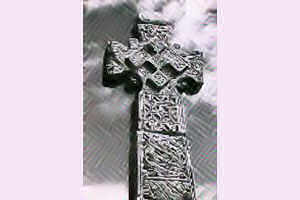
Though little more than half a mile to the west of the busy Dublin road, there is an air of detachment and antiquity about this celebrated place. The monastery came into existence in the sixth century but little is known of its founder, St Buite. Its fame rests chiefly on its exquisitely sculptured High Crosses, notably the South Cross, now generally called Muiredach’s Cross after an abbot whose name is inscribed on the base. The cross is remarkable for the variety and organisation of its scriptural themes and the superb quality of the carving, executed in the early decades of the tenth century.
Not far away, beside the Round Tower (now capless but still over 90 feet high), is the slender and beautiful West Cross, alias the Tall Cross, from its exceptional height of 21 feet, it has suffered from weathering and not all of its panels are identifiable. In another corner of the graveyard, partly obscured by trees and sometimes missed by visitors, is the North Cross. Though not as elaborate as the other two it is nevertheless a fine specimen, decorated with unusual spiral motifs.
Kilmalkedar Church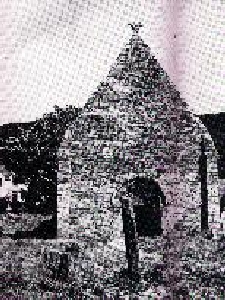
The ancient monastery of Kilmalkedar, founded in the seventh century by St Maolcathair, is one of the foremost Early Christian sites of the Dingle Peninsula. The existing church is a twelfth-century building consisting of a nave to which a chancel was added at a later date, as was the usual practice. Many of the features which typify Irish Romanesque architecture are present. The bold antae with animal-head decoration are well preserved, as is the round-headed doorway with blank tympanum. The high pitched gables (one with finial) survive intact, but of the original barrel-vaulted roof only the merest fragments remain. In the nave is a good example of blind colonnading, recalling Cormac’s Chapel at Cashel, with which it is often compared. late-Romanesque geometric motifs adorn the columns of the chancel arch.
Holy Cross Abbey, Tipperary 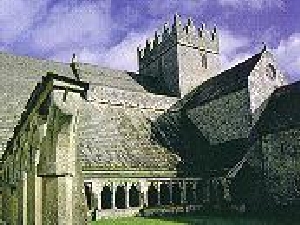
Thurles is remembered for being the town where Michael Cusack and his friends, formed the G.A.A. It is also known as the town which hosted Feile for a number of years, where teenagers made the “Trip to Tipp.” But outside Thurles, is the Holy Cross Abbey, which was founded in 1169 by the King of Thomond of the Cistercian monks. A relic of the true cross owned by the King was given to the Abbey.
It was very prosperous and several of the Abbots were peers of Parliament. The Abbey was suppressed in and given to the Earl of Desmond. The monks however, stayed until the 17th century. In the grounds of the Abbey are a complete set of Stations of the Cross, donated by Senator and Mrs. Hanafin, of Thurles. The Stations of the Cross were erected in honour of Padre Pio. Mass is said in the Abbey and is a popular place for weddings.
Glendalough Monastery
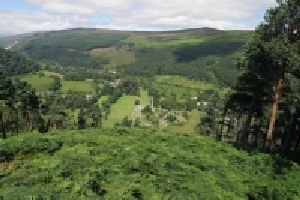
Glendalough Monastery was founded by St. Kevin, in the 6th century. St. Kevin is perhaps unfairly linked to a poetic legend. While living in a cave as a hermit, he was supposedly pursued by a woman, who tried to seduce him. In a rage, he hurled her over the cliff, and into the lake, but there is no evidence to support this story. But his cave, which is located in the upper part of the lake is known as ‘St. Kevin’s Bed’.
Glendalough has a fabulous collection of buildings including the Cathedral, which dates from the 7th century, which was used as a Cathedral church until the 13th century, when the Glendalough See was united with Dublin. The Round Tower which is 103 feet high and has a 52 feet circumference. There is also St, Kevin’s house, which is a double vaulted Oratory, and is more popularly known as St. Kevin’s Kitchen.
Ballintubber Abbey 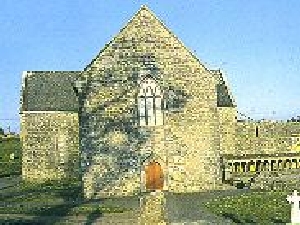
Ballintubber Abbey was founded in 1216 by Cathal Crobhdearg O’Connor, King of Connacht, near the site of the church built by St. Patrick in 441. Despite the Abbey’s turbulent history, which included repression and burning, the Abbey ‘refused to die’ and now has the unique status of being Ireland’s only royal Abbey which has been in continuous use for over 780 years. Spend some time in Ballintubber and Stroll around the grounds of the Abbey. Pray within its hallowed walls.
Visit the Interpretative Centre at the Abbey and let a guide unfold the story. Take a boat trip to Church Island, a place of prayer and solitude. Visit the historic places on Lough Carra e.g. Doon Nature Peninsula. Play a round of golf on par 3 golf course. Visit the thatched cottage and farm museum. Walk Tochar Phadraig, the ancient pilgrim path to Croagh Patrick some 35 km distance or on the IVV walks. Spend time boating on Lough Carra fishing or sightseeing. Stay with us in registered accommodation and enjoy meals and entertainment in restaurants and pubs.
Clonfert, Galway 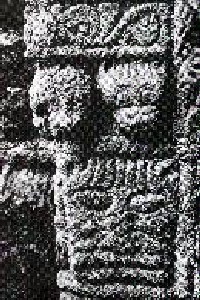
A twelfth-century cathedral (St. Brendan’s) with thirteenth-century extensions. Despoiled in the sixteenth century, it was clumsily restored at various times afterwards and now serves as the Protestant parish church of Clonfert. The carved decoration, inside and out, is of exceptional quality, and the great west doorway ranks as the masterwork of Irish Romanesque art. Built in warm-toned sandstone, it is composed of six orders (the seventh, innermost order in limestone is a fifteenth-century insertion) and is notable for the exaggerated splay of the jambs.
The variety of ornamental devices is remarkable, and eclectic inventory of the stone mason’s repertoire comprising geometric designs, human and animal heads, interlace patterns and foliage. Above the arch is a pediment-like hood, the gable of which is filled with carved heads set in triangular niches and supported on a panel of blind arcading. Many of the motifs and architectural features are rare in Irish Romanesque and some are unique to Clonfert.
Dalkey Island, Dublin 
A small treeless island 300 yards offshore from Coliemore harbour, where row-boats may be hired.
The island is uninhabited and its main interest is the early church dedicated to Saint Begnet near the landing place on the west shore. It has prominent antae and a massively lintelled doorway with slightly inclined jambs. The original roof was probably thatch or shingles, but medieval slates discovered in the course of excavation show that the church remained in use for some considerable time. The bell cote on the west gable is also a late addition.
Alterations were made to the interior of the building at the beginning of the nineteenth century when it was temporarily occupied by the workmen who constructed the Martello tower on the island.
On a weathered rock outside the church is an inscribed cross in a circle, a relic perhaps of the first monastery here, possibly in the sixth or seventh century.
Aghaboe, Laois 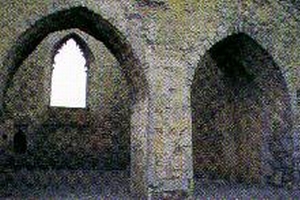
The site of St. Cannice’s Monastery in the sixth-century. Plundered in 913, rebuilt in 1052, burnt I 1116, rebuilt in 1234, and again burnt in 1346. The nineteenth-century church on the site of the Augustinian Priory church retains thirteenth-century pieces and pieces from the nearby fourteenth-century Dominican Abbey. To the east is Aghaboe House (private), a recently restored early eighteenth-century house. In a field to the north is Adam de Hereford’s square motte.
